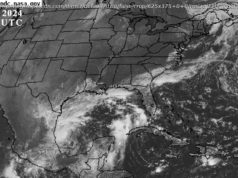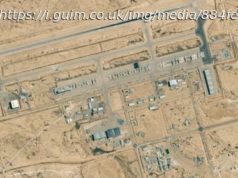At least 660,000 people, mostly women and children, fled Ukraine in the five days after Russia invaded — the most intense wave of European migration since at least the 1990s.
ON THE UKRAINIAN-MOLDOVAN BORDER — The war in Ukraine has set off the fastest mass migration in Europe in at least three decades, prompting comparisons with the Balkan wars of the 1990s and providing echoes of the vast population displacement that followed World War II. At least 660,000 people, most of them women and children, fled Ukraine for neighboring countries to the west in the first five days of Russia’s invasion, according to the United Nations refugee agency, which collated statistics recorded by national immigration authorities. And that figure does not include those displaced within Ukraine, or who fled or were ordered to evacuate to Russia. The enormous numbers, which continue to rise, mean the Ukraine crisis is displacing people at a higher rate than any European conflict since at least the Bosnian war. In less than a week, the flight of Ukrainians is at least 10 times higher than the one-week record of people entering Europe during the 2015 migration crisis, and nearly double the number of refugees recorded by the U.N. during the first 11 days of the Kosovo war in 1999. The historic westward movement of people has caused lines of up to 24 hours at border checkpoints along Ukraine’s borders with Poland, Moldova, Hungary, Slovakia and Romania, and prompted a vast humanitarian response by both governments and civilians. Refugees have been sheltered in repurposed schools as well as private apartments, makeshift camps, conference centers, upscale wineries and even the home of a Moldovan lawmaker. “We don’t know where we’re going,” said Anna Rogachova,34, a homemaker from Odessa, a city on the Black Sea, minutes after crossing into Moldova with her 8-year-old daughter on Tuesday morning. “And we don’t know when we’re coming back.” “Let the world know,” Ms. Rogachova said, pointing at a multicolored suitcase in the back of her car. “We left everything. We put all our lives in this single bag.” Then, as the snow began to fall, she started to cry. Some refugees believe the war will end soon, allowing them to return quickly. Ms. Rogachova wasn’t so sure. If the displacement stretches out for years, it would present long-term challenges for Ukraine, which would face a brain drain of rare proportions, and for host countries where resources are limited and anti-immigrant sentiment has run strong. But it could mean opportunities; Eastern European countries like Moldova, which have experienced depopulation for decades, could suddenly find themselves boosted by a large, educated immigrant population. Migration statistics can be imprecise, particularly in the opening stages of a chaotic new crisis, Peter Gatrell, a historian of European migration at the University of Manchester in Britain, said in a phone interview. But to leading migration historians like Professor Gatrell, the scenes nevertheless already summon echoes of the great migrations in European history, including those in the 1940s, when several million people were displaced throughout Europe at the end of World War II.






